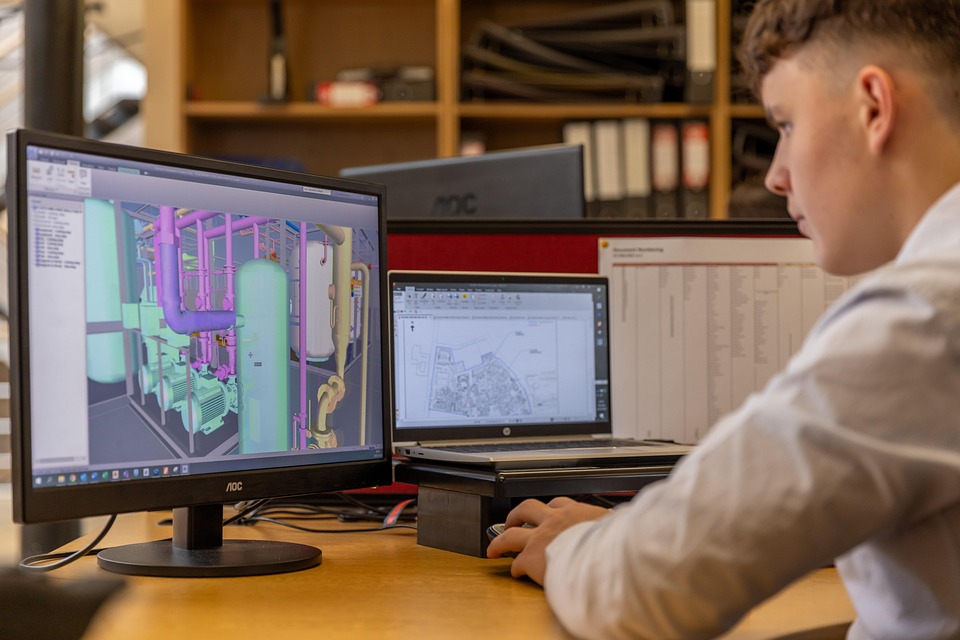Embarking on a career as a CAD technician offers a blend of creativity and technical prowess, making it an enticing pathway for many. As you venture into this dynamic field, understanding the roadmap to success is essential. The journey is not merely about mastering software; it’s an intricate dance of skills, experience, and networking.
1. The Foundation: Education and Training
A solid educational background paves the way for your CAD career. Many technicians start with a relevant qualification—typically a Level 3 Diploma in Computer-Aided Design or an HND in Engineering. Yet, the world of CAD is ever-evolving. Pursuing higher education, such as a degree in architectural technology or mechanical engineering, can distinguish you from the crowd.
Moreover, vocational courses and apprenticeships present an excellent alternative, offering hands-on experience alongside theoretical knowledge. The key is to stay updated with the latest software, such as AutoCAD, SolidWorks, or Revit—familiarity with these tools is non-negotiable.
2. Building Skills: Technical and Soft
In today’s CAD landscape, technical skills are just the tip of the iceberg. Mastering software is crucial, but understanding the principles of design, drafting, and engineering is equally important. Dive into the nuances of 2D and 3D modelling, and don’t overlook the significance of spatial awareness and problem-solving abilities.
Soft skills, often underestimated, play a pivotal role in your professional life. Communication skills are vital; you’ll frequently liaise with architects, engineers, and clients. Being able to articulate your ideas clearly can set you apart, especially during collaborative projects.
3. Gaining Experience: Internships and Entry-Level Positions
Experience is the currency of success in the CAD realm. Seek internships or entry-level positions that allow you to apply your skills in real-world scenarios. These roles not only enhance your technical capabilities but also provide invaluable insights into industry practices.
Networking is key during this phase. Attend industry events, workshops, and seminars. Engaging with professionals can open doors to opportunities and collaborations that may not be publicly advertised.
4. Specialisation: Finding Your Niche
Once you’ve gained a solid grounding, consider specialising. The CAD field is diverse; you might gravitate towards architectural CAD, mechanical drafts, or even civil engineering designs. Specialising allows you to hone your skills further and increases your marketability.
In the UK, sectors such as construction, automotive, and manufacturing are bustling with demand for CAD technicians. Research industry trends to align your specialisation with market needs, ensuring you remain relevant and sought-after.
5. Continuous Learning: Staying Ahead
The CAD landscape is in a constant state of flux, driven by technological advancements. Embrace lifelong learning—enrol in professional development courses, attend webinars, or gain certifications in the latest software or methodologies.
This commitment to continual improvement not only enhances your skills but also signals to employers that you’re proactive and dedicated to your profession.
6. Crafting Your CV: Making an Impact
Your CV is often the first impression you make on potential employers. It should reflect not only your qualifications and experience but also your unique personality and skill set. Tailor your CV to each application, highlighting relevant projects and achievements.
In a competitive job market, a well-structured CV can be the difference between landing an interview and being overlooked. Consider utilising resources like CVPortal, which continuously provides various high-quality CV examples to help you shine.
Carving out a successful career as a CAD technician in the UK is a journey filled with opportunities for growth and innovation. By investing in your education, building essential skills, gaining experience, and staying ahead of industry trends, you set the stage for a fulfilling and prosperous career. Remember, the road may be winding, but with dedication and the right resources, the destination is well within reach.


